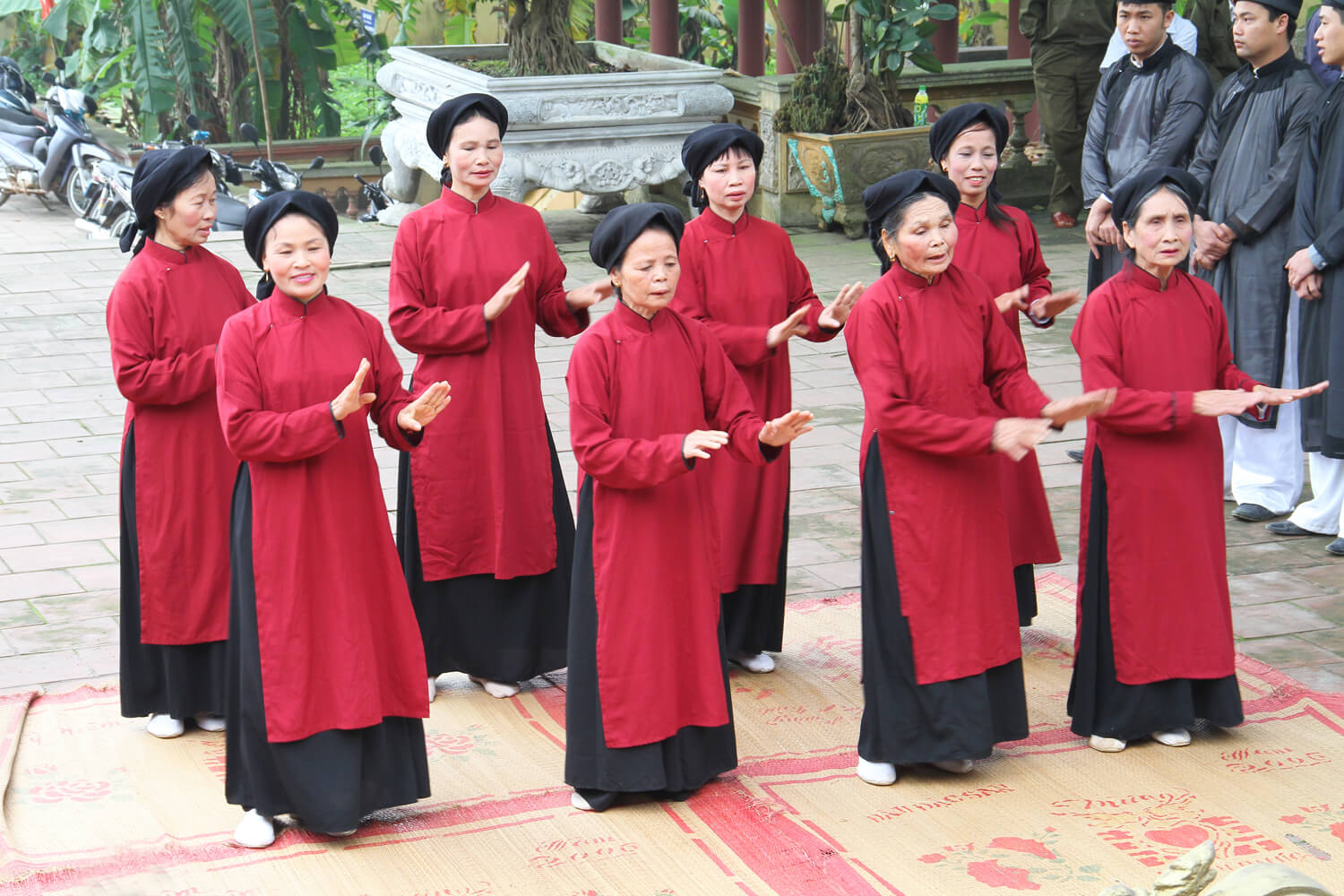“Xoan” singing is so-called “Khuc Mon Dinh” (or “Hat Cua Dinh”) in Vietnamese. That form of art performance originated in Phu Tho and then spread to some neighbor provinces in Northern Vietnam.
Legend has it that “xoan” singing emerged in King Hung’s Dynasty and was a form of art performance to serve at special events in royal palace. “Xoan” singing was also part of traditional liturgies. Thus, Phu Tho – the ancient capital city of Van Lang has becomethe cradle of “xoan” singing. The name “xoan” comes from name of a “xoan” singer called “Le Thi Lan Xuan”. She is said to be a famous vocalists who had contributed to “xoan” singing’s popularity.
“Xoan” singing is usually performed by female vocalists in traditional Vietnamese costumes (“ao canh” and “khan mo qua”), and sometimes male vocalists. “Xoan” singing is also associated with folk dance and drums for the beat. In the past, vocalists had gathered in groups called “phuong xoan” or “ho xoan” in Vietnamese. The head is called “ong trum” (boss); female vocalists are called “xoan” and male vocalists are called “kep”.
On November 24th, 2011, “xoan” singing was recognized as Intangible Cultural Heritage in Need of Urgent Safeguarding by the United Nations Educational, Scientific and Cultural Organization (UNESCO).

